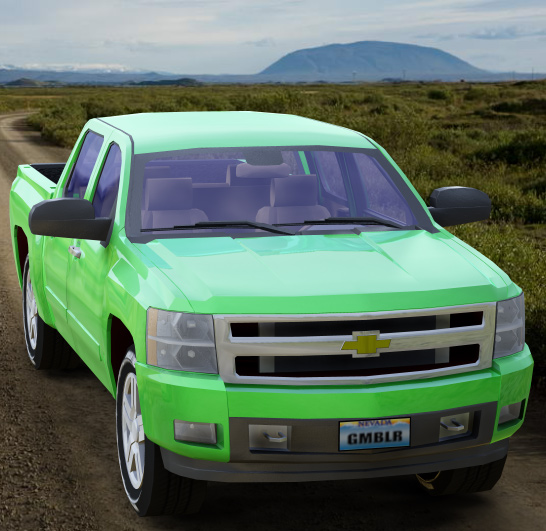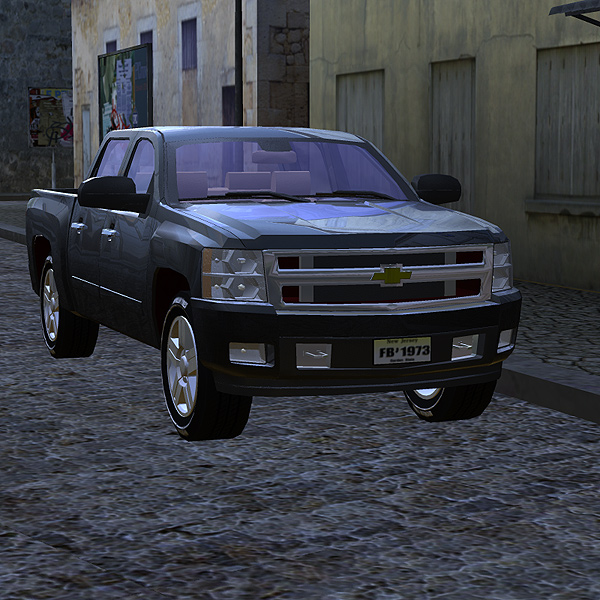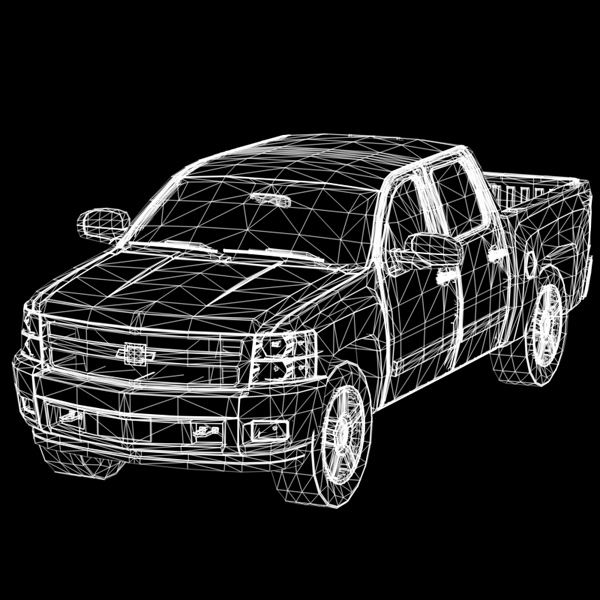Silverado Truck 2007 (Poser, Vue, 3ds, Lwo & Obj) by RPublishing











Requirements:
Poser 5 & up, Vue 6, Lightwave 5&up, OR software that opens OBJ files
Departments:
Available Uses:
As of 2007, the Silverado pickup is the 2nd largest volume vehicle in the United States, behind the Ford F-Series pickup truck. Combined with platform-mate GMC Sierra, the platform usually outsells the Ford F-Series, which is actually made of two different platforms for standard and heavy duty models, not counting SUV derivatives such as Suburban, Tahoe, Escalade, or Yukon. For the first half of 2008, 231,320 Silverados were sold in the U.S., compared with 274,713 Ford F-Series. With 83,174 GMC Sierras also sold in the same period, the GM vehicles outsold the Ford pickups by 14.5% (compared to just over 15% for the same period of 2007).
Although General Motors introduced its first pickup truck in 1930, the term "Silverado" was a designation only used to detail the higher-level trim for the Chevrolet C/K pickup trucks from 1975 through 1999. GMC used a few variations of the "Sierra" name (Sierra, High Sierra, Sierra Grande, Sierra Classic) to distinguish the different trim levels through 1987, though the "C/K" nomenclature was continued through 1999. "C" (or "R" for 1987) trucks had rear-wheel drive while "K" (or "V" in 1987) models had four-wheel drive. Both Chevrolet and GMC dropped the "C" and "K" designations in 1999.
The Chevrolet Silverado and GMC Sierra trucks have been essentially the same for their entire history. The Silverado today is generally advertised as the "lower" version, while the Sierra has more luxury options. There are some trim and option variations as well. Early models included variations in the engine and equipment, but the present differences are slight. The 1999 redesign included different grilles and interior trim, and certain features (e.g. Quadrasteer) were included at different times on the two trucks.
.: Product Features :.
- Poser polygons 64305
- Model built entirely with 3-sided polygons.
- Includes basic interior, which can be seen though the windows.
- Includes "group" information, which your software should interpret as separate parts and allow you to move the wheels.
- The 3ds version of the model includes basic coloring, but no maps (textures, bump, or reflection) are included.
- The obj version includes an mtl file, which your software program should read to colorize the model.
- The Lightwave version includes color, reflective metal surfaces, and a reflection map for more detail.